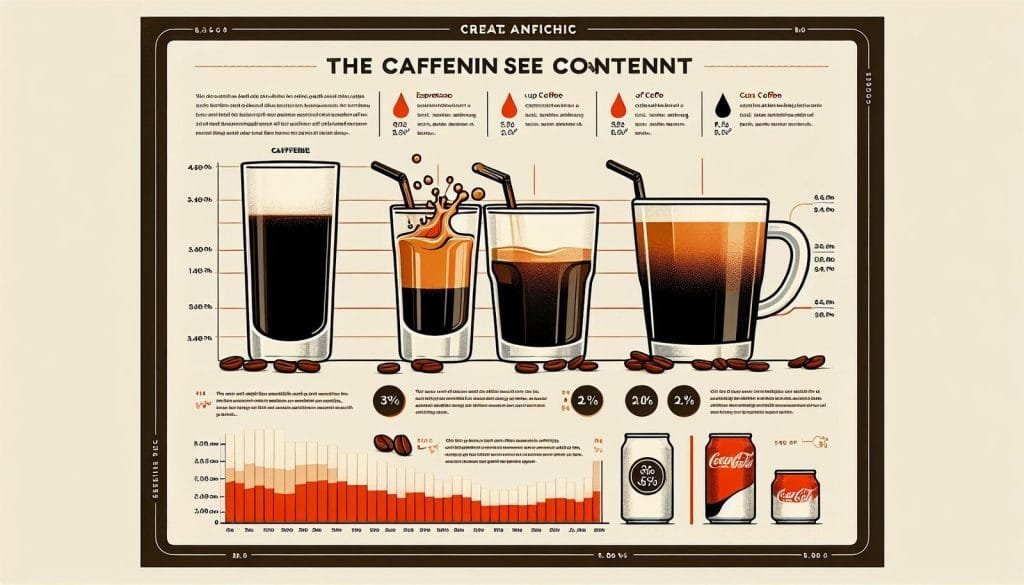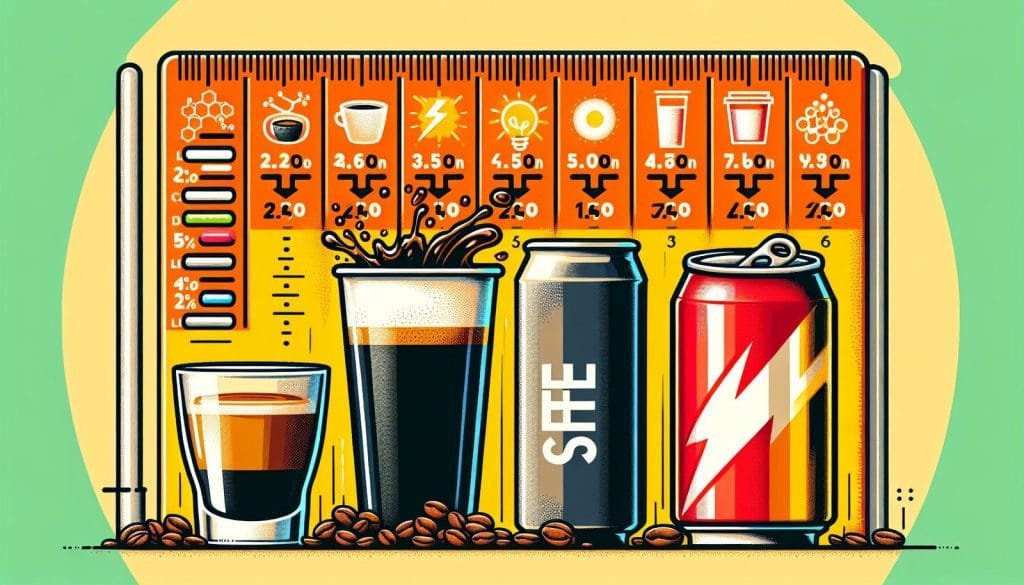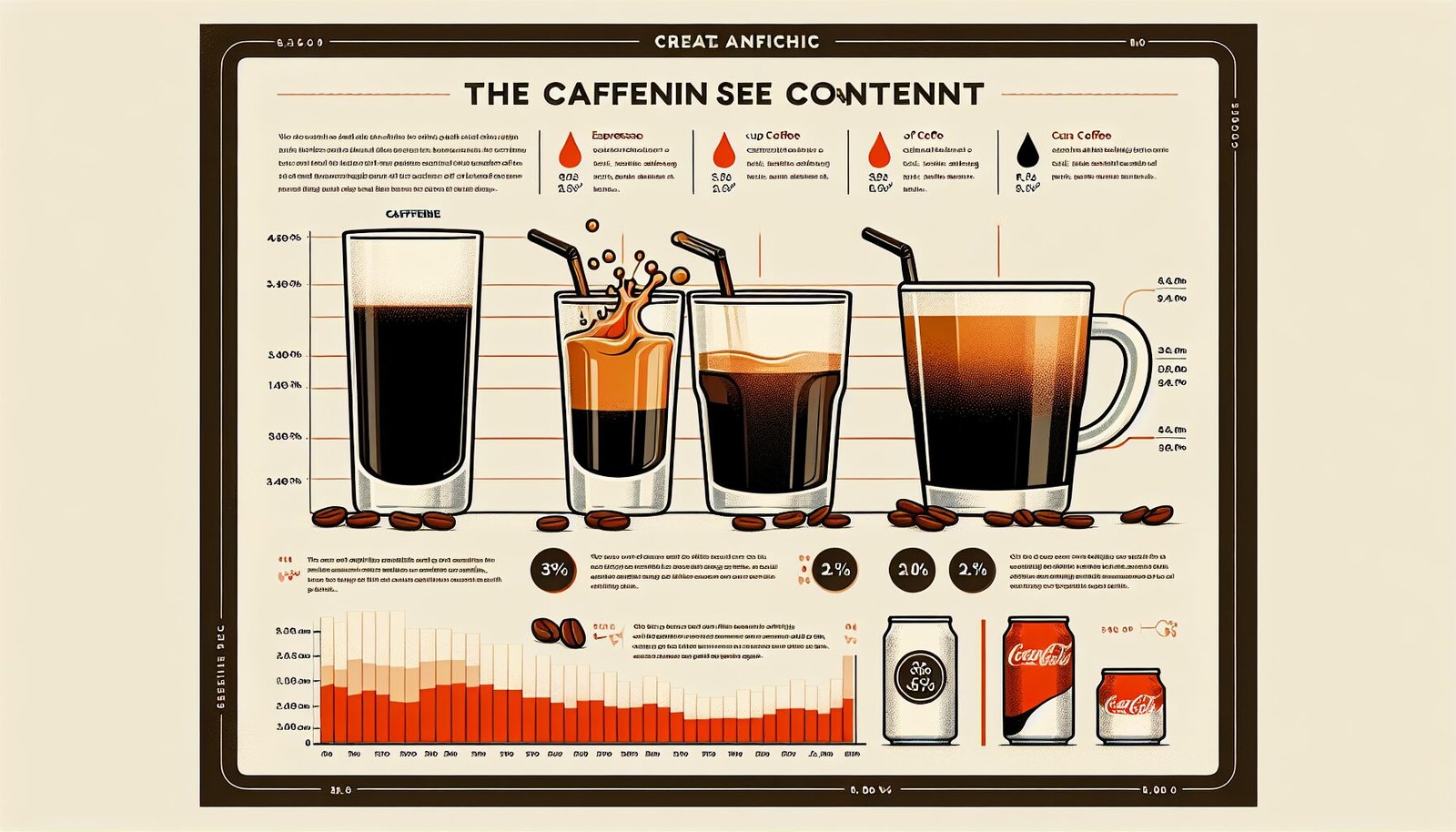In the realm of coffee aficionados, the significance of a shot of espresso holds a paramount position. Its rich and concentrated flavor, along with its invigorating effect, attracts coffee enthusiasts from all walks of life. But have you ever wondered about the precise measurement of a shot of espresso and how it compares to other coffee-based beverages? This article delves into the depths of this intriguing subject, exploring the true essence of a shot of espresso and shedding light on its equivalence in the realm of coffee consumption.

What is a Shot of Espresso?
Definition
A shot of espresso is a concentrated coffee beverage that is made by forcing hot water through finely ground coffee beans. It is typically served in a small cup or shot glass and is known for its strong flavor and intense taste. The brewing process for espresso involves using a machine that can generate the pressure necessary to extract the flavors from the coffee grounds quickly and efficiently. This results in a small amount of highly concentrated coffee that is enjoyed by many coffee enthusiasts around the world.
Purpose
The purpose of a shot of espresso is to provide a quick and concentrated dose of caffeine and flavor. It is often consumed as a standalone beverage or used as the base for various espresso-based drinks, such as cappuccinos and lattes. Because of its strong flavor and high caffeine content, espresso is favored by those who enjoy a bold and intense coffee experience. The small serving size makes it a convenient choice for those who want a quick pick-me-up without consuming a large volume of liquid.
Standard Espresso Shot Size
Single Shot
A standard single shot of espresso typically contains about 1 ounce (30 milliliters) of liquid. This amount of espresso is extracted from roughly 7 grams of coffee grounds. Single shots are commonly served in smaller cups or shot glasses. They are popular among those who prefer a more concentrated coffee experience or enjoy savoring the distinct flavors of the coffee beans.
Double Shot
A double shot of espresso is made by extracting approximately 2 ounces (60 milliliters) of liquid from around 14 grams of coffee grounds. This larger serving size provides a stronger and more robust flavor profile compared to a single shot. Double shots are often used as the base for various espresso-based drinks and are favored by those who want a more intense coffee experience.
Ristretto Shot
A ristretto shot of espresso is a shorter and more concentrated version of a standard espresso shot. It is made by extracting only 0.5 to 0.75 ounces (15 to 22 milliliters) of liquid from the same amount of coffee grounds used for a single shot. The result is a smaller volume of espresso that is highly concentrated and packed with flavor. Ristretto shots are known for their sweeter and more intense taste, making them a popular choice among espresso connoisseurs.
Lungo Shot
In contrast to a ristretto shot, a lungo shot of espresso is made by extracting a larger volume of liquid. Typically, a lungo shot contains about 2.5 to 3 ounces (75 to 90 milliliters) of liquid and is made with the same amount of coffee grounds used for a single shot. The longer extraction time results in a milder and less concentrated flavor compared to a standard espresso shot. Lungo shots are favored by those who prefer a milder taste or enjoy a larger serving size of espresso.
Different Measurements in Different Countries
Italy
In its birthplace of Italy, a shot of espresso is referred to as a “caffè.” The standard serving size for a caffè in Italy is typically around 30 milliliters, which is equivalent to a single shot of espresso. Italians generally prefer a smaller and more concentrated serving size of espresso, emphasizing the quality and intensity of the coffee flavors.
United States
In the United States, the standard serving size for a shot of espresso is typically larger than in Italy. It is common to find double shots of espresso as the default option in many coffee shops and cafes. A double shot in the United States usually contains about 2 ounces (60 milliliters) of liquid, providing a stronger and more robust coffee experience.
United Kingdom
In the United Kingdom, the standard serving size for a shot of espresso can vary. Some coffee shops and cafes follow the Italian tradition of serving single shots, while others may offer double shots as the standard. The coffee culture in the United Kingdom is diverse, with different establishments catering to various preferences and tastes.
Australia
In Australia, the coffee culture has a strong focus on specialty coffee and espresso-based drinks. The standard serving size for a shot of espresso in Australia is typically a double shot, containing around 2 ounces (60 milliliters) of liquid. Australian coffee enthusiasts often appreciate the bold and intense flavors that a double shot provides, contributing to the popularity of this serving size in the country.
Caffeine Content in a Shot of Espresso
Factors Affecting Caffeine Content
The caffeine content of a shot of espresso can vary depending on several factors. The type of coffee bean used, the roast level, and the brewing method all contribute to the final caffeine content in the espresso. Generally, darker roasted coffee beans have slightly less caffeine than lighter roasted beans, as the roasting process tends to reduce the caffeine content. Additionally, the brewing time and extraction process of espresso can influence the caffeine content, with longer extraction times potentially resulting in higher levels of caffeine.
Average Caffeine Content
On average, a single shot of espresso contains approximately 63 milligrams of caffeine. However, it is important to note that the exact caffeine content can vary depending on the factors mentioned earlier. A double shot of espresso typically contains around 125 milligrams of caffeine. These amounts may seem lower compared to a regular cup of coffee, but espresso’s intense flavor and concentration make it a popular choice among caffeine seekers.

Calories and Nutritional Value
Calories
A shot of espresso typically contains a very minimal amount of calories, averaging around 3 calories per shot. This low caloric content makes espresso a suitable choice for those who are watching their calorie intake or practicing a calorie-restricted diet. However, it is important to note that the addition of milk, sugar, or other flavorings to espresso-based drinks can significantly increase the overall calorie content.
Macronutrients
In terms of macronutrients, a shot of espresso contains virtually no fat, carbohydrates, or protein. The brewing process of espresso focuses on extracting the coffee flavors and caffeine from the beans, resulting in a beverage that is devoid of significant macronutrients. As such, espresso is not a significant source of energy or nutrients, but rather a flavorful and concentrated caffeine boost.
Micronutrients
While espresso does not provide substantial amounts of macronutrients, it does contain some micronutrients. Coffee beans are natural sources of antioxidants, such as chlorogenic acid and caffeic acid, which can have various health benefits. Additionally, espresso contains small amounts of minerals like magnesium, potassium, and niacin. However, the micronutrient content of espresso is relatively low compared to other food sources, so it should not be relied upon as a significant source of these nutrients in one’s diet.
Benefits of Drinking Espresso
Increased Alertness
One of the key benefits of drinking espresso is its ability to provide a quick and noticeable boost in alertness and wakefulness. The high caffeine content in espresso stimulates the central nervous system, leading to increased mental alertness and reduced fatigue. This is especially beneficial in situations that require focus and concentration, such as in the workplace or during study sessions.
Improved Mental Function
In addition to increasing alertness, espresso has been shown to have positive effects on cognitive function and mental performance. Studies have suggested that moderate caffeine intake, such as that found in an espresso shot, can enhance attention, memory, and overall cognitive functioning. These cognitive benefits are attributed to caffeine’s ability to block adenosine receptors, allowing for increased dopamine and norepinephrine activity in the brain.
Potential Health Benefits
Research has also indicated that moderate coffee consumption, which includes espresso, may be associated with various health benefits. Some studies have found that regular coffee consumption, including espresso, could potentially reduce the risk of certain health conditions, such as type 2 diabetes, Parkinson’s disease, and liver disease. However, it is important to note that individual responses to coffee and caffeine can vary, and moderation is key to avoiding potential negative effects.
Espresso versus Regular Coffee
Caffeine Content
One noticeable difference between espresso and regular coffee is the concentration of caffeine. While a shot of espresso contains a higher amount of caffeine per ounce compared to regular drip coffee, the serving size of espresso is significantly smaller. As a result, a full cup of regular coffee may contain more caffeine overall compared to a shot or even a double shot of espresso. However, because of its concentrated nature, espresso provides a more immediate and intense caffeine boost.
Flavor and Strength
Espresso is known for its intense flavor and strength compared to regular coffee. The brewing process of espresso creates a highly concentrated and bold beverage that can be appreciated by those who enjoy a robust and distinctive coffee experience. Regular coffee, on the other hand, is often brewed in larger quantities and has a milder and more diluted taste. The flavor profiles of espresso and regular coffee can vary based on the type of beans used, the roast level, and the brewing method employed.
Preparation Methods
The preparation methods for espresso and regular coffee also differ significantly. Espresso is made using specialized espresso machines that generate high-pressure hot water through coffee grounds, resulting in a quick extraction process. Regular coffee, on the other hand, is typically brewed by pouring hot water over a larger quantity of coffee grounds and allowing it to steep for a longer period. The differences in preparation methods contribute to the distinct characteristics and flavors of espresso and regular coffee.
Types of Espresso-based Beverages
Espresso Macchiato
An espresso macchiato is a popular espresso-based beverage that consists of a shot of espresso topped with a small amount of steamed milk or foam. The word “macchiato” literally means “stained” or “spotted” in Italian, referring to the small amount of milk that is added to the espresso shot. This beverage strikes a balance between the strong flavors of espresso and the creamy richness of milk.
Cappuccino
Cappuccino is a classic espresso-based drink that combines equal parts of espresso, steamed milk, and frothed milk. Traditionally, cappuccinos are served in a larger cup and are often garnished with a sprinkle of cocoa powder or cinnamon on top. The smooth and velvety texture of the steamed and frothed milk complements the intense flavor of the espresso, resulting in a well-balanced and satisfying beverage.
Latte
A latte is similar to a cappuccino but contains more milk. It is made by combining a shot of espresso with a larger amount of steamed milk, topped with a thin layer of foam. Lattes are generally served in a tall glass or cup and can be customized with various flavored syrups, such as vanilla or caramel. The higher milk-to-espresso ratio in a latte creates a creamy and milder coffee experience.
Americano
An Americano is a simple yet popular espresso-based drink that consists of a shot or double shot of espresso diluted with hot water. This beverage is similar to regular drip coffee in terms of flavor and strength, but it maintains the distinct espresso characteristics. Americanos can be enjoyed black or with the addition of milk or sugar according to personal preference.
Mocha
A mocha, also known as a caffe mocha, is a delightful combination of espresso, steamed milk, chocolate syrup or powder, and sometimes topped with whipped cream. This sweet and indulgent espresso-based drink is often favored by those with a sweet tooth. The chocolate flavor pairs harmoniously with the rich and bold taste of espresso, creating a satisfying and decadent beverage.
Flat White
Originally from Australia and New Zealand, the flat white is a popular espresso-based drink that has gained popularity worldwide. It is made by combining a double shot of espresso with steamed milk, creating a velvety and smooth beverage. The flat white is known for its balance between the intensity of espresso and the creamy texture of milk, resulting in a satisfying and well-rounded coffee experience.
Making Espresso at Home
Espresso Machines
To make espresso at home, an espresso machine is essential. There are various types of espresso machines available, ranging from manual lever machines to automatic and super-automatic machines. Manual lever machines require the user to manually control the pressure and extraction time, while automatic and super-automatic machines automate the process to varying degrees. The choice of an espresso machine depends on personal preference, budget, and desired level of control over the brewing process.
Grinding and Tamping
To ensure a well-extracted shot of espresso, it is important to use freshly ground coffee beans. A high-quality burr grinder is recommended to achieve a consistent and even grind size. The ground coffee should then be evenly distributed into the espresso machine’s portafilter. Tamping, or compacting the coffee grounds, helps to ensure uniform extraction. A firm and level tamp is generally recommended to achieve optimal results.
Brewing Techniques
The brewing process for espresso involves heating water to the appropriate temperature and then forcing it through the compacted coffee grounds under pressure. The ideal water temperature for espresso extraction is typically around 195 to 205 degrees Fahrenheit (90 to 96 degrees Celsius). The water should be pushed through the coffee grounds at a pressure of around 9 bars (130 pounds per square inch) for optimal extraction. The time required for extraction is usually between 20 to 30 seconds, resulting in a concentrated and flavorful shot of espresso.
Conclusion
A shot of espresso is a concentrated and flavorful coffee beverage that is enjoyed by many coffee enthusiasts around the world. Whether consumed as a standalone shot or as the base for various espresso-based drinks, espresso provides an intense and bold coffee experience. It is important to note that the standard serving size and preferred coffee-to-milk ratio can vary across different countries and cultures. Despite its small size, espresso packs a significant caffeine punch and offers potential cognitive and health benefits when consumed in moderation. Whether enjoyed in a bustling café or made at home with an espresso machine, espresso is a beloved beverage that continues to captivate the taste buds of coffee lovers worldwide.




